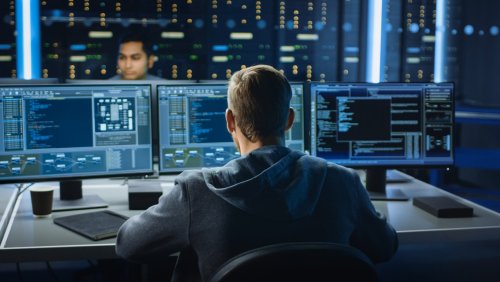-
Upcoming Events
-
-
Volunteering positions
-

Build framework maintainer
Position: Framework maintainerNumber of places: 16Applicants: 6
-
-
Chat | Social Media
#armbian at
irc.libera.chat or irc.oftc.net
Matrix or Discord
Mastodon | 𝕏 -
Popular Now
-
Activity Stream
-
78
Helios4 doesn't boot after upgrading to linux-6.6.71 (linux-image-current-mvebu_25.2.0-trunk.343)
ii armbian-config 26.2.0-trunk.48.1205.194441 all Armbian config: The Next Generation ii armbian-firmware 25.11.2 all Armbian - Linux firmware ii hostapd 3:2.10-6~armbian22.02.3+1 armhf IEEE 802.11 AP and IEEE 802.1X/WPA/WPA2/EAP Authenticator No LSB modules are available. Distributor ID: Debian Description: Armbian 25.11.2 bookworm Release: 12 Codename: bookworm # PLEASE DO NOT EDIT THIS FILE BOARD=helios4 BOARD_NAME="Helios4" BOARDFAMILY=mvebu BUILD_REPOSITORY_URL=https://github.com/armbian/build BUILD_REPOSITORY_COMMIT=2efd215a DISTRIBUTION_CODENAME=buster DISTRIBUTION_STATUS=supported VERSION=20.05.2 LINUXFAMILY=mvebu BRANCH=current ARCH=arm IMAGE_TYPE=stable BOARD_TYPE=conf INITRD_ARCH=arm KERNEL_IMAGE_TYPE=Image Yes. Definitely -
78
Helios4 doesn't boot after upgrading to linux-6.6.71 (linux-image-current-mvebu_25.2.0-trunk.343)
Hi there, How about the output of dpkg --list | grep 'armbian' lsb_release -a cat /etc/armbian-release ? Just to be sure, you are using armbian right? Gr, -
78
Helios4 doesn't boot after upgrading to linux-6.6.71 (linux-image-current-mvebu_25.2.0-trunk.343)
That command doesn't output anything.... -
78
Helios4 doesn't boot after upgrading to linux-6.6.71 (linux-image-current-mvebu_25.2.0-trunk.343)
Hi, Hmm that looks like the "old" bootscript still. Odd. Can you share the output of dpkg --list | grep 'bsp-cli' ? -
78
Helios4 doesn't boot after upgrading to linux-6.6.71 (linux-image-current-mvebu_25.2.0-trunk.343)
Sure! # DO NOT EDIT THIS FILE # # Please edit /boot/armbianEnv.txt to set supported parameters # setenv load_addr "0x300000" # default values setenv rootdev "/dev/mmcblk0p1" setenv rootfstype "ext4" setenv verbosity "1" setenv emmc_fix "off" setenv spi_workaround "off" setenv ethaddr "00:50:43:84:fb:2f" setenv eth1addr "00:50:43:25:fb:84" setenv eth2addr "00:50:43:84:25:2f" setenv eth3addr "00:50:43:0d:19:18" echo "Boot script loaded from ${devtype}" if load ${devtype} ${devnum} ${load_addr} ${prefix}armbianEnv.txt; then env import -t ${load_addr} ${filesize} fi setenv bootargs "console=ttyS0,115200 root=${rootdev} rootwait rootfstype=${rootfstype} ubootdev=${devtype} scandelay loglevel=${verbosity} usb-storage.quirks=${usbstoragequirks} ${extraargs}" load ${devtype} ${devnum} ${fdt_addr_r} ${prefix}dtb/${fdtfile} load ${devtype} ${devnum} ${ramdisk_addr_r} ${prefix}uInitrd load ${devtype} ${devnum} ${kernel_addr_r} ${prefix}zImage fdt addr ${fdt_addr_r} fdt resize 65536 for overlay_file in ${overlays}; do if load ${devtype} ${devnum} ${load_addr} ${prefix}dtb/overlay/${overlay_prefix}-${overlay_file}.dtbo; then echo "Applying kernel provided DT overlay ${overlay_prefix}-${overlay_file}.dtbo" fdt apply ${load_addr} || setenv overlay_error "true" fi done for overlay_file in ${user_overlays}; do if load ${devtype} ${devnum} ${load_addr} ${prefix}overlay-user/${overlay_file}.dtbo; then echo "Applying user provided DT overlay ${overlay_file}.dtbo" fdt apply ${load_addr} || setenv overlay_error "true" fi done if test "${overlay_error}" = "true"; then echo "Error applying DT overlays, restoring original DT" load ${devtype} ${devnum} ${fdt_addr_r} ${prefix}dtb/${fdtfile} else if test -e ${devtype} ${devnum} ${prefix}dtb/overlay/${overlay_prefix}-fixup.scr; then load ${devtype} ${devnum} ${load_addr} ${prefix}dtb/overlay/${overlay_prefix}-fixup.scr echo "Applying kernel provided DT fixup script (${overlay_prefix}-fixup.scr)" source ${load_addr} fi if test -e ${devtype} ${devnum} ${prefix}fixup.scr; then load ${devtype} ${devnum} ${load_addr} ${prefix}fixup.scr echo "Applying user provided fixup script (fixup.scr)" source ${load_addr} fi fi # eMMC fix if test "${emmc_fix}" = "on"; then echo "Applying eMMC compatibility fix to the DT" fdt rm /soc/internal-regs/sdhci@d8000/ cd-gpios fdt set /soc/internal-regs/sdhci@d8000/ non-removable fi # SPI - SATA workaround if test "${spi_workaround}" = "on"; then echo "Applying SPI workaround to the DT" fdt addr ${fdt_addr} fdt resize fdt set /soc/internal-regs/sata@e0000 status "disabled" fdt set /soc/internal-regs/sata@a8000 status "disabled" fdt set /soc/spi@10680 status "okay" fdt set /soc/spi@10680/spi-flash@0 status "okay" fi bootz ${kernel_addr_r} ${ramdisk_addr_r} ${fdt_addr_r} # Recompile with: # mkimage -C none -A arm -T script -d /boot/boot.cmd /boot/boot.scr
-
-
Member Statistics


